You are using an out of date browser. It may not display this or other websites correctly.
You should upgrade or use an alternative browser.
You should upgrade or use an alternative browser.
Homemade Bread Thread
- Thread starter deadfall
- Start date

Help Support Homebrew Talk - Beer, Wine, Mead, & Cider Brewing Discussion Forum:
This site may earn a commission from merchant affiliate
links, including eBay, Amazon, and others.
ericbw
Well-Known Member
- Joined
- Dec 11, 2012
- Messages
- 3,592
- Reaction score
- 1,225
It is definitely hard to use it right from the fridge. Take it out and feed it to get it strong, then use it.
Also, if you've seen the directions on baking in a dutch oven or a pot - that makes a big difference! With yeast bread, I think you can get a good rise in the oven, and steam (a pan in the oven with water in it) can make a big difference.
With sourdough, I have had the best results from cooking it covered. Preheat the oven and cast iron pot at 425 for about 30 minutes. Bake covered for 20 minutes, then uncovered for 20 minutes.
I also find that if I add sugar to the recipe it rises less in the oven.
Also, if you've seen the directions on baking in a dutch oven or a pot - that makes a big difference! With yeast bread, I think you can get a good rise in the oven, and steam (a pan in the oven with water in it) can make a big difference.
With sourdough, I have had the best results from cooking it covered. Preheat the oven and cast iron pot at 425 for about 30 minutes. Bake covered for 20 minutes, then uncovered for 20 minutes.
I also find that if I add sugar to the recipe it rises less in the oven.
So this is the first loaves from the starter I posted the other day. I was going to do a single one pound loaf but forgot to put the starter into the fridge again so did two.





sort of Italian-ish bread using 1:2:3 start:water:flour
100gm starter
200gm water
300gm king Arthur AP
5gm salt
7gm sugar
15gm extra virgin olive oil





sort of Italian-ish bread using 1:2:3 start:water:flour
100gm starter
200gm water
300gm king Arthur AP
5gm salt
7gm sugar
15gm extra virgin olive oil
Last edited:
applescrap
Be the ball!
Look nice, they appear soft looking too. Well done
These do seem a bit softer, could be the all AP flour normally I use 1/3 or 1/2 bread flour but did not have any.
ericbw
Well-Known Member
- Joined
- Dec 11, 2012
- Messages
- 3,592
- Reaction score
- 1,225
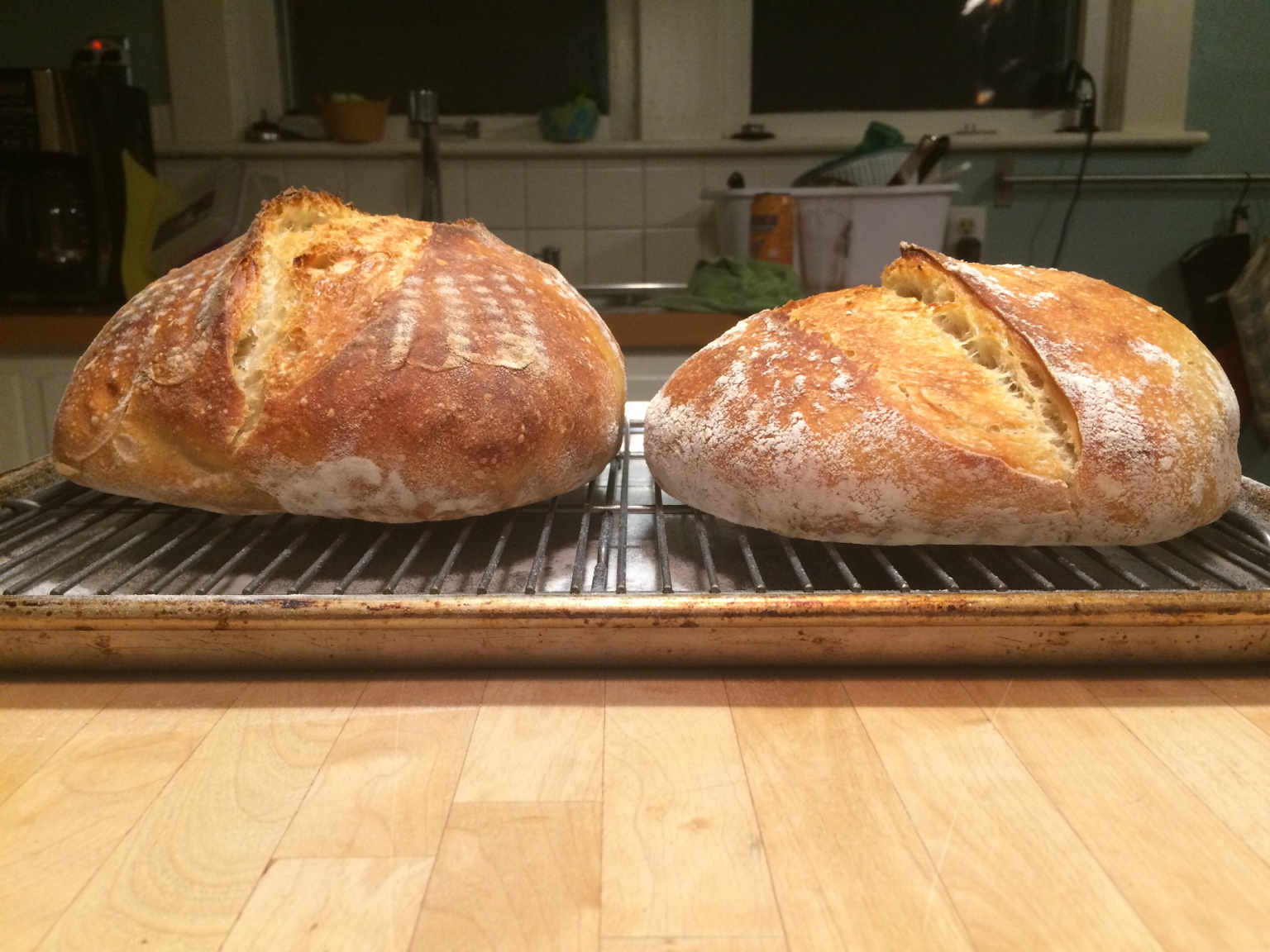
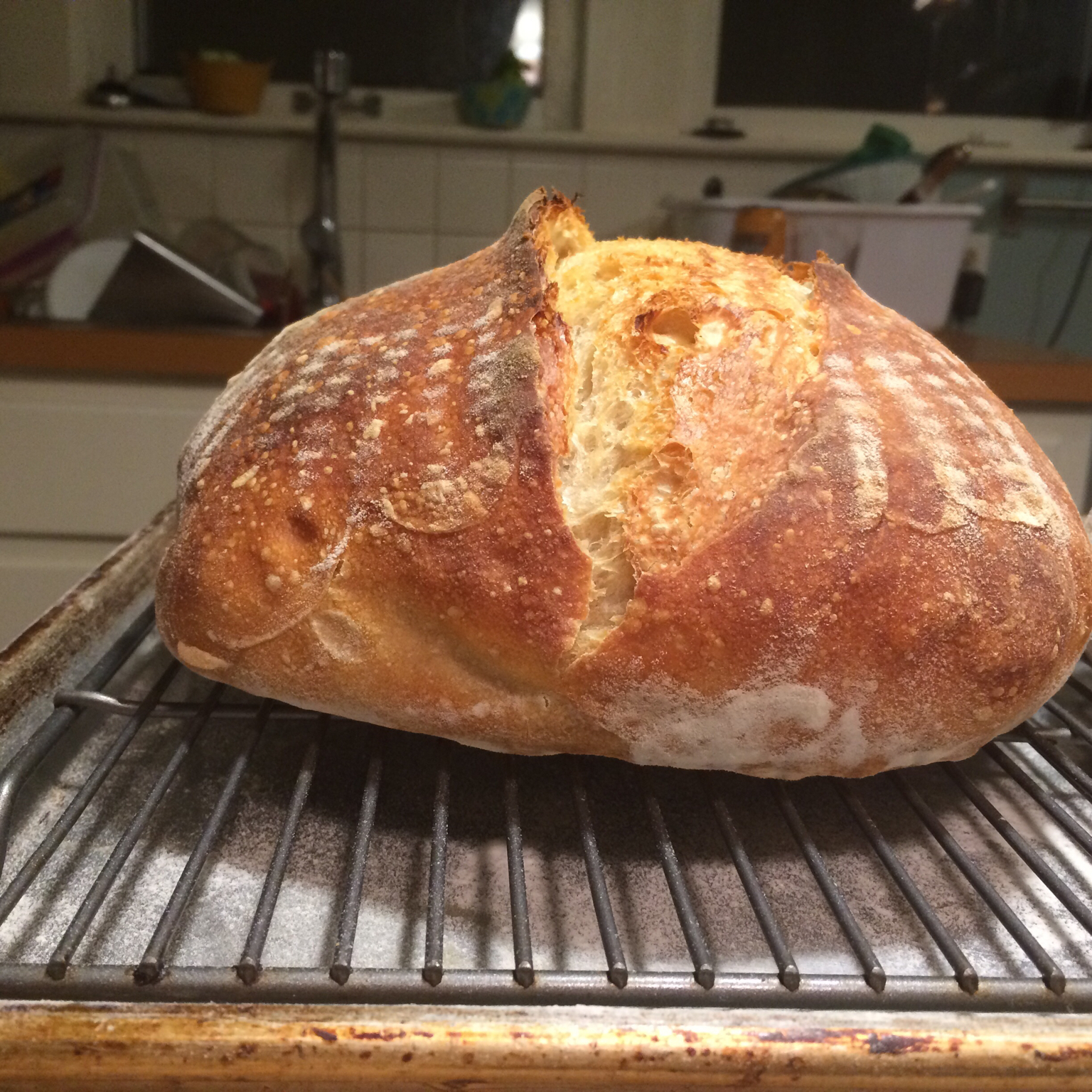
Same recipe, different techniques.
4 oz starter
15 oz flour
8 oz water
13g salt
The one on the right was all mixed together and left to rise in an oiled bowl.
The one on the left: built leaven with starter, all the water, and half the flour. 12 hours later, I added the rest of the flour.
Stretch and fold every 30 minutes for 2 hours, adding the salt at the first stretch. (That means 30 minutes rest/autolyze before adding salt.)
Then let it rise 4-5 hours. No oil on this one.
Shaped both loaves and proofed in baskets for 4 hours. Baked covered 20 minutes and uncovered 20 minutes.
The smaller loaf rose a lot less in bulk and after shaping. It was also never smooth and stretchy, always seemed a little under mixed.
applescrap
Be the ball!
Cinnamon bread since mil liked the cinnamon bread so much she took it home with her. Will put foil over the top eariler going forward. Have a boule resting now for dinner.
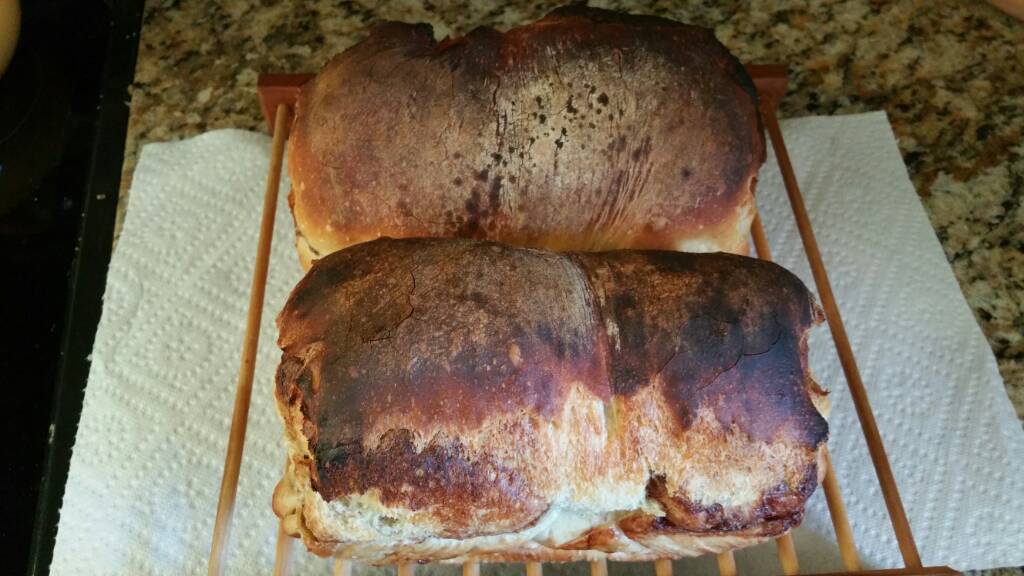

applescrap
Be the ball!
Dinner boule was nice

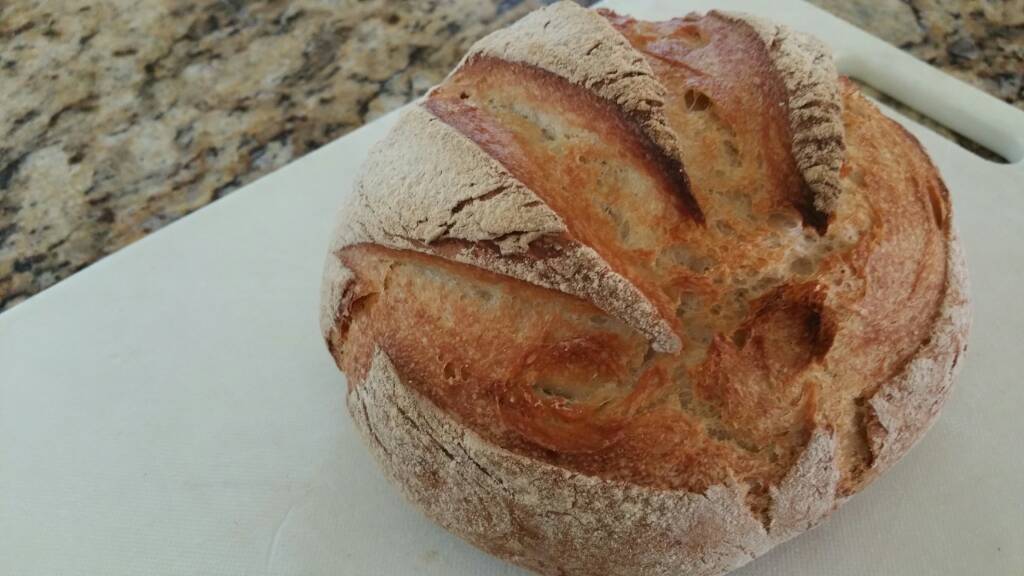


your boules are like a piece of art, very nice.
applescrap
Be the ball!
Cool, thank you. Tonight, not so much but hope is there. Thought i had this clever idea to roll out dough and cut buns, but didnt roll out thin enough and or cut big enough. Little, tall, rolls, again. Happy to have them for lunch though.
Calling all bun experts, any tips, shape, etc...
Pigs n blanket for kids, and err I couldnt stop.
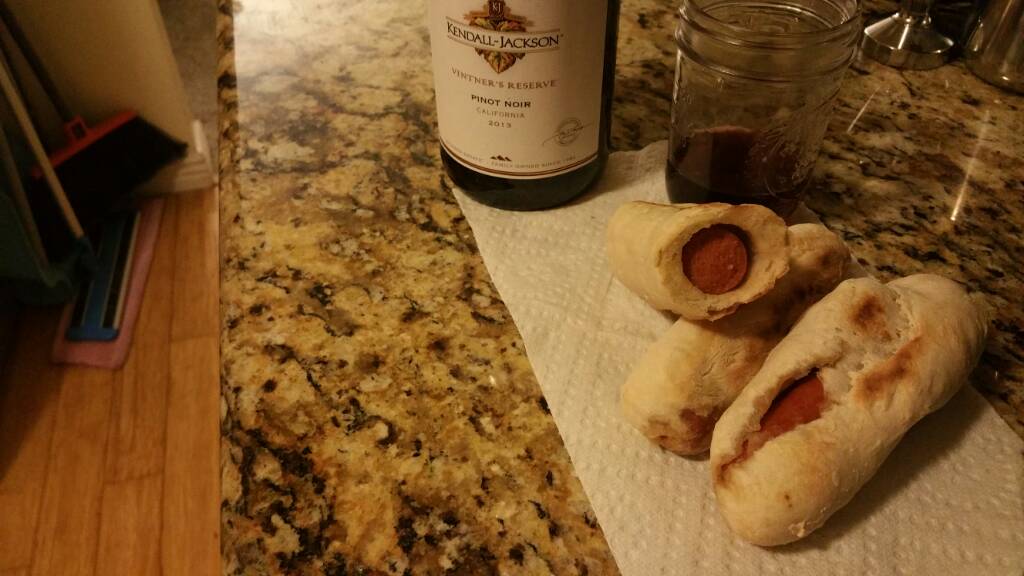


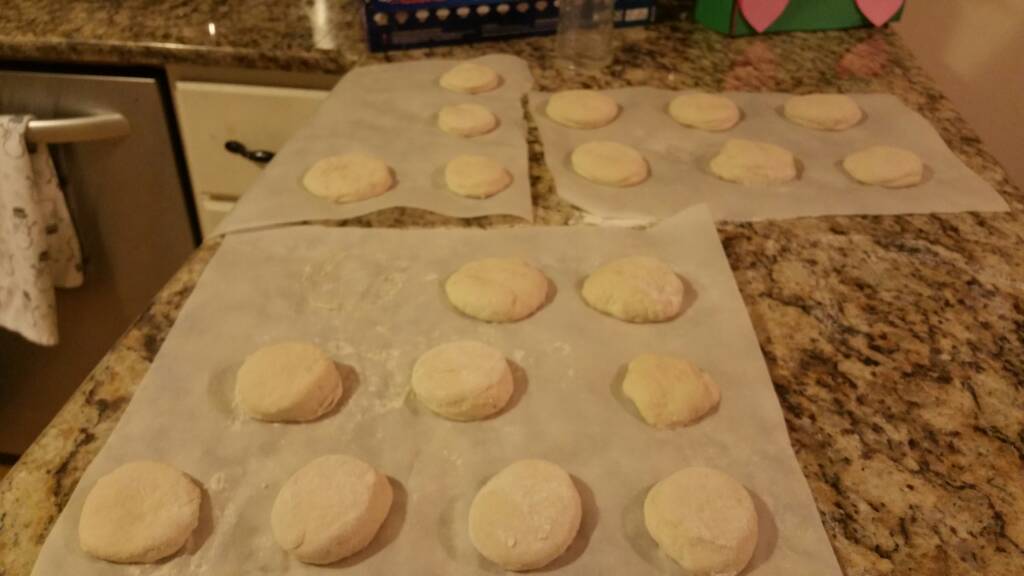
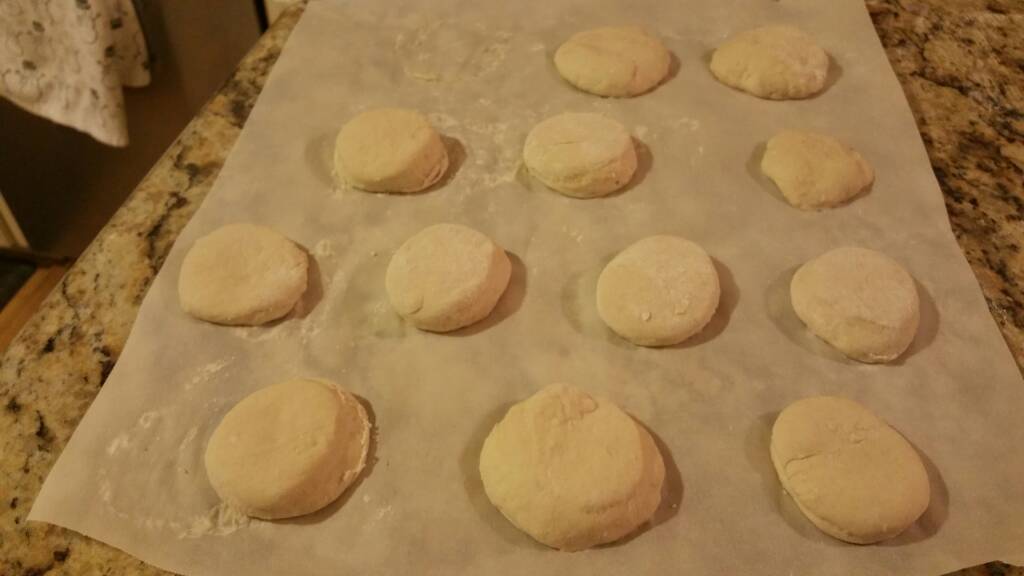
Calling all bun experts, any tips, shape, etc...
Pigs n blanket for kids, and err I couldnt stop.






applescrap
Be the ball!
Lots of loaves and some cinnamon rolls. Pics are before proof, after proof, top cooked, and flipped. Parchment paper made short work of mess. I covered the bread so it wouldnt get too dark, but the pp stuck to it and created those little peaks.
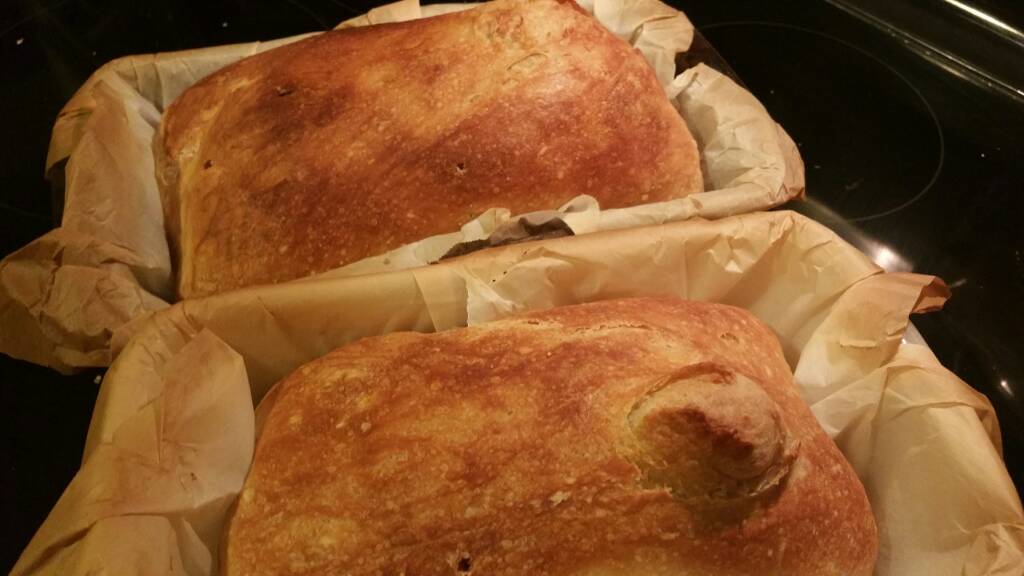
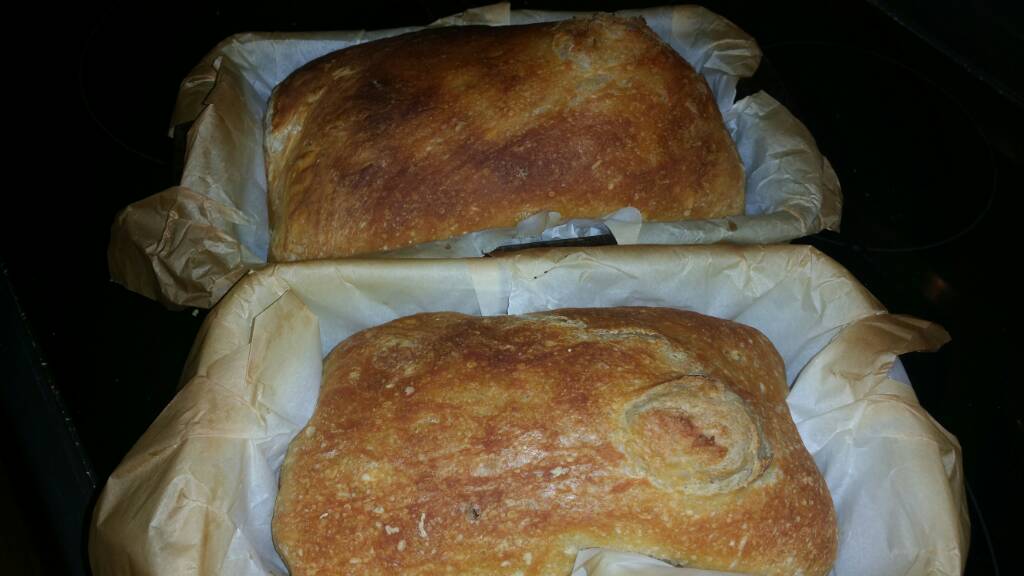
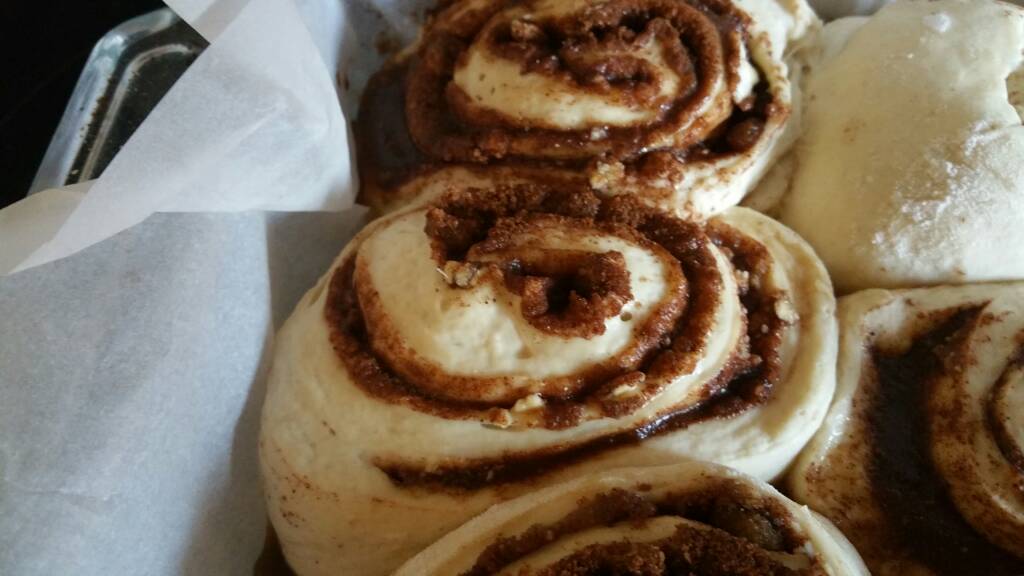
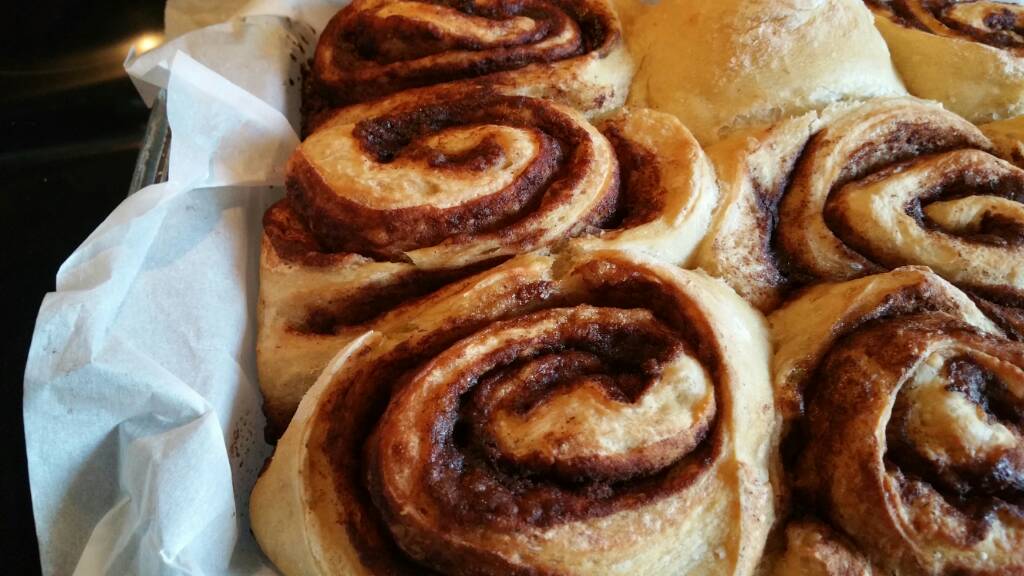








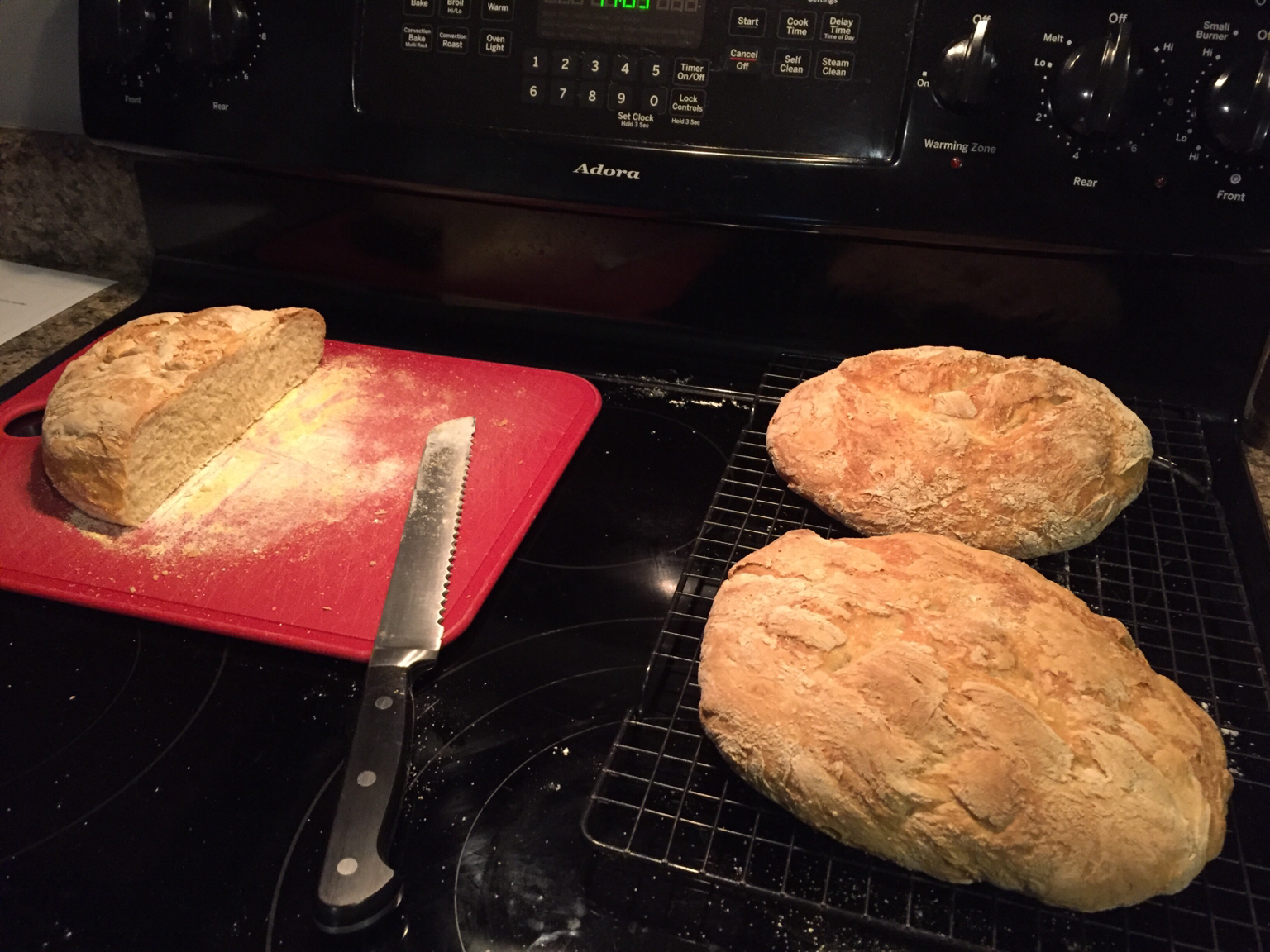
After seeing a few posts here I had to try my hand at a simple recipe. I would love to get a stand mixer with a kneading attachment someday. Anyhow, it smelled so good my wife wanted to try some before bed. Well half of a loaf is gone as you can see. It is pretty tasty. I wonder what it would be like with some spent grains mixed in there???
This thread is awesome. How have I over looked this section of the board!
Juat got into baking some sourdough last fall. My attempts have been anemic in my opinion, but they are tasty.
Consistency is my goal. I'm going to try to bake every weekend for the next few months to develop some type of repeatable recipe. I think weighing my ingredients will be the starting point.
Here's last night's attempt. The crust is crunchy, the middle is chewy, but my loaves are always flat.
This was an attempt to see how dough moisture effects the end loaf. The loaf on the right was a very wet, sticky dough. The one on the left was a very dense, dry dough. I think wet, sticky dough wins this round.
View attachment 558622
I have the same problem with flat loaves. They’re always so dense too. Taste great, crispy crust and chewy bread but I want bigger, lighter loaves with those big bubbles - is there an end to end how to with recipe I’m missing?
I have the same problem with flat loaves. They’re always so dense too. Taste great, crispy crust and chewy bread but I want bigger, lighter loaves with those big bubbles - is there an end to end how to with recipe I’m missing?
This site has a good primer on sourdough:
https://www.theperfectloaf.com/beginners-sourdough-bread/
I've bought some wholemeal spelt, anyone use it? I've used white spelt before, just not the wholemeal stuff. I saw Bonci had a recipe pan pizza with it, although I'm going to try it in bread first. Was thinking 50/50 with normal white bread flour?
applescrap
Be the ball!
Sorry, never used spelt. I am on the prowl for cookware though. I'm leaning towards William Sonoma goldtouch bread pan. But the USA pan is only 15. And there are cheaper pans. Every time I convinced myself it matters I start to wonder if it does. Any thoughts
StonesBally
Well-Known Member
Standard aluminum baking pans are used everywhere in the industry. They are shiny new, but soon take on a dull appearance. They cook more quickly and brown more evenly than glass or ceramic or the dark non stick pans. Best for bread, cakes, muffin tins, sheet trays, you name it.
The last few loaves I did a no knead thing where I just did a stretch and fold every hour and there was more bigger holes.I have the same problem with flat loaves. They’re always so dense too. Taste great, crispy crust and chewy bread but I want bigger, lighter loaves with those big bubbles - is there an end to end how to with recipe I’m missing?
Are you getting oven spring on your loaves, do you slash the top of the loaves so they can expand?
I like to put the loaves in at 450 with some water to make steam which helps them expand. After about 10mins I drop the temp to 400 and remove the steam as the crust is already set.



Last edited:
applescrap
Be the ball!
Last night tried to make a huge boule but didnt slash it deep enough. And then in a fairly drunken binge ate half of it!




rlmiller10
Well-Known Member
I have the same problem with flat loaves. They’re always so dense too. Taste great, crispy crust and chewy bread but I want bigger, lighter loaves with those big bubbles - is there an end to end how to with recipe I’m missing?
You might try making your dough more hydrated. My sour dough gets dense and has smaller holes if I let the dough be too dry. I use a kitchaide mixer and add enough water so the dough sticks to the side of of the bowl, almost batter like until about minute 5 or 6 of kneading. Then it magically pulls away right at the last as the gluten forms up.
Other loafs, using commercial yeast, are much dryer, they form a ball on the dough hook and "thump" around the sides as the dough kneads. They come out with a nice even texture. My sourdough comes out dense if I make it that dry.
bstacy1974
Well-Known Member
So, for me, I'm just starting this bread making thing. As such, I don't think I've been following proper techniques to get a good rise. It drives me nuts too.I have the same problem with flat loaves. They’re always so dense too. Taste great, crispy crust and chewy bread but I want bigger, lighter loaves with those big bubbles - is there an end to end how to with recipe I’m missing?
For my try today, I pulled some of my starter and began feeding it 2 days ago. I wanted a healthy, active culture for today's attempt.
Second, I withheld the salt until after the autolyse rest was complete, which I haven't done yet.
Next, I put the dough in a large oiled bowl to "ferment" for four hours. During this time, I stretched and folded the dough about every 30 mins.
I just formed my loaf, placed it in a colander with a floored towel, and put it in the fridge to rest over night.
Now, normally, I would pull it out of the fridge to rise again the following day, but I don't know if this is correct?
Should I bake the dough cold or let it warm?
If I let it go overnight I let it warm then punch it down and form the loaf with one last rise/proof before baking.
StonesBally
Well-Known Member
Let the dough come up to near room temp. I wouldn't punch it down again if it were me. If you like big airy open crumb bread you want to preserve those bubbles in the dough. Punching dough down evens out all the holes. Higher hydration rate is great for bigger holes in dough. Usually use 63-65% hydration for my standard loaves. When I'm making a open crumb, airy sourdough I shoot for 80% hydration. It makes a huge difference on the internal structure.
bstacy1974
Well-Known Member
This is the recipe I'm using.
100 grams sourdough starter
250 grams water
12 grams kosher salt
394 grams flour
Please make any suggestions for modifications. I like to keep my loaves small because I'm the only one who eats this in the house. My wife and kids don't like sourdough.
The dough from yesterday is out and warming now. I'll bake later today. Pics to come.
100 grams sourdough starter
250 grams water
12 grams kosher salt
394 grams flour
Please make any suggestions for modifications. I like to keep my loaves small because I'm the only one who eats this in the house. My wife and kids don't like sourdough.
The dough from yesterday is out and warming now. I'll bake later today. Pics to come.
Your recipe is pretty close to mine except you are using a bit less starter and slightly lower hydration but almost twice the salt.This is the recipe I'm using.
100 grams sourdough starter
250 grams water
12 grams kosher salt
394 grams flour
Please make any suggestions for modifications. I like to keep my loaves small because I'm the only one who eats this in the house. My wife and kids don't like sourdough.
The dough from yesterday is out and warming now. I'll bake later today. Pics to come.
I use a 1:2:3 ratio of starter:water:flour with 1.7% salt. As others have mentioned it seem like if you want more bigger bubbles you need to reduce your flour down to 350gm or a little less.
I normally hand knead my dough and I get fairly fine bubbles, the stretched no knead had more larger bubbles but nothing too crazy. My starter is not too sour so I do knock it down to extend the ferment to get some flavor, which sounds like that might not be the best for hole formation.
I tried to add a pic of my last attempt using the stretch and fold approach, but it does not seem to want to load.
You really need to work to the breads schedule, I have had loaves before where I got busy with other stuff and let it go for too long before baking and those were more dense and did not rise as well. Given enough time my starter will turn the dough to soup.
bstacy1974
Well-Known Member
This loaf already looks better than all of my previous attempts. Just went into the oven.


bstacy1974
Well-Known Member
Ladies and gentlemen, we have sourdough! Best loaf yet!




applescrap
Be the ball!
Yum!^^
@bstacy1974 That looks like a pretty good loaf, definitely looks soft and chewy.
Seems like you get pretty good lift over the cut, but not as much over the edges and the bottom. The surface of your dough looks a bit dry maybe give it spritz of water to soften the surface so it can stretch. Doing a X might help to get it to expand over a larger area might work too.
Seems like you get pretty good lift over the cut, but not as much over the edges and the bottom. The surface of your dough looks a bit dry maybe give it spritz of water to soften the surface so it can stretch. Doing a X might help to get it to expand over a larger area might work too.
bstacy1974
Well-Known Member
Thanks. I normally bake on the weekends, but I've already started another batch of starter. I'll play with the hydration this next try. I can always take my attempts to work. My coworkers will appreciate my "failures".@bstacy1974 That looks like a pretty good loaf, definitely looks soft and chewy.
Seems like you get pretty good lift over the cut, but not as much over the edges and the bottom. The surface of your dough looks a bit dry maybe give it spritz of water to soften the surface so it can stretch. Doing a X might help to get it to expand over a larger area might work too.
Spent grain bread.
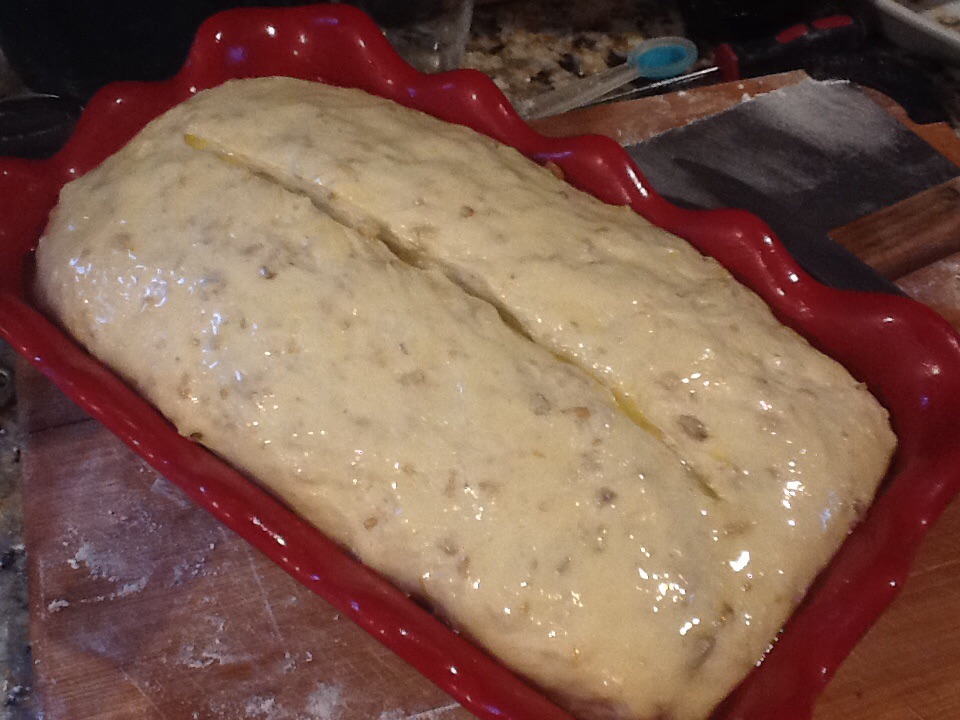





Last edited:
dup, sorry
ericbw
Well-Known Member
- Joined
- Dec 11, 2012
- Messages
- 3,592
- Reaction score
- 1,225
This is the recipe I'm using.
100 grams sourdough starter
250 grams water
12 grams kosher salt
394 grams flour
Please make any suggestions for modifications. I like to keep my loaves small because I'm the only one who eats this in the house. My wife and kids don't like sourdough.
The dough from yesterday is out and warming now. I'll bake later today. Pics to come.
The recipe is part of it, but technique/method is also important. As someone mentioned, a little less flour might help.
Do you know about "baker's percentages?" That means that the flour represents 100% and the water is X% of that - when people talk about "hydration," that's what they mean. Your recipe is 63% (250 divided by 394), which is low hydration for sourdough. It would be fine for a yeast bread. Try increasing water or reducing the flour a little as suggested.
Kneading it or punching down makes the bubbles smaller. This is great for sandwich bread, where you might punch down even twice. But as little squeezing as possible is best. Stretching and folding is more time consuming, but makes bigger holes.
And baking with steam OR in a covered pot also helps to make it pop up. If the oven is dry, then the crust gets hard and it doesn't expand any more. I THINK (could be wrong!) that gas ovens have more moisture in the air than electric ovens.
Your last pic looks like you got great results! How did you bake it, what changes did you make?
I THINK (could be wrong!) that gas ovens have more moisture in the air than electric ovens.
You are correct. Gas ovens suck at life because they are so much more moist than electric ovens. I can't wait to get rid of mine only because food doesn't brown as well as in electric.
However, the amount of moisture is NOT enough to keep the crust from setting early. You still need to add steam. I use both a steam pan (about 8oz) and a spray bottle (few squeezes every minutes for the first 4 mintues). The trouble with gas ovens comes when the steam pan is empty and the oven returns to normal, it's still too moist to get really deep browning. It'll brown to golden, but good luck getting mahogany brown without overcooking the rest of the loaf.
bstacy1974
Well-Known Member
Your last pic looks like you got great results! How did you bake it, what changes did you make?
Thank you. I didn't know about baker's percentages and hydration before really digging into this thread. Once I started seeing talk of hydration, I tried to educate myself a little more.
Increasing the water is the next modification I'll try.
My baking method is in an enameled cast iron dutch oven. Electric oven, 450F, covered, for 20 mins. Then, an additional 20+ mins with the lid off. Looking forward to baking more this weekend, somewhere between the 4 kid's soccer schedules and a batch of Kolsch!
Hmm, I have never heard about gas vs electric moisture... Water evaporates at the same temp no matter the source, does it not? Is it that added humidity is naturally in the gas? Just curious.
another dupe, sorry. 

Similar threads
- Replies
- 4
- Views
- 284
- Replies
- 4
- Views
- 376



